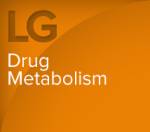IQ DMLG Webinar - Metabolites as Perpetrator of Drug-Drug Interactions

June 20, 2014
Webinar
Location: Webinar
Venue: GoToMeeting
Metabolites as Perpetrator of Drug-Drug Interactions: Risk Assessment, PBPK Modeling, and Recommendations
Hongbin Yu (Boehringer Ingelheim), Ian Templeton (Jessen) and Manthena V. Varma (Pfizer), on behalf of IQ DMLG Metabolite Working Group
The 2012 EMA drug interaction guidance and the FDA draft drug interaction guidance proposed that human circulating metabolites should be investigated in vitro for their drug-drug interaction (DDI) potential if present at ≥ 25% of parent AUC (FDA) or >25% parent & >10% of total drug-related AUC (EMA). To examine the application of these regulatory recommendations, a group of scientists, representing 18 pharmaceutical companies of the Drug Metabolism Leadership Group (DMLG) of the Innovation and Quality Consortium (IQ), conducted a scholarship to assess the contributions of metabolites to P450 inhibition-based DDI. The group assessed the risk of having a metabolite as the sole contributor to a DDI based on literature and analysis of 137 most frequently prescribed drugs (as of 2012), defined structural alerts associated with P450 inhibition and inactivation by metabolites, and analyzed the current approaches to trigger in vitro DDI studies for metabolites. The group also used PBPK modeling to integrate the contribution of metabolites and parent to DDI for a few well-known examples where metabolites are believed to be the major perpetrator of the observed DDI (amiodarone, sertraline, gemfibrozil, and bupropion).
The group concluded that the risk of P450 inhibition caused by a metabolite alone is relatively low. Only 8 drugs out of the 137 most frequently prescribed drugs (6%) showed in vivo DDI which were not predicted based on the in vitro P450 inhibition properties of the parent drug. The group recommended two main considerations when assessing the need to conduct in vitro P450 inhibition studies for metabolites: First, consider key structural alerts that suggest P450 inhibition potential (e.g. alkylamines for mechanism-based inhibition). Second, use multiple approaches, including the two literature approaches by Yu & Tweedie (2013) and Callegari et al. (2013), which involved a metabolite cut-off value of approximately 100% of AUC of parent, and consideration of metabolite Cmax/Ki, to minimize surprises in P450 inhibition-based DDI in the clinic.
PBPK models were developed to evaluate the contribution of the perpetrator metabolites to the observed DDIs between specific CYP substrates and four perpetrator drugs (amiodarone, sertraline, gemfibrozil, and bupropion), which show significant plasma exposure of the metabolite(s) relative to parent. Considerations to transporter-enzyme interplay were also made in this mechanistic assessment. This exercise notes the critical importance of the in vivo metabolite data in order to produce quantitative predictions of the potential DDI. The case examples established the utility of PBPK in hypothesis testing and also highlighted several areas for future development in regard to the in vitro characterization of interaction potential and PBPK model structure for the metabolites.